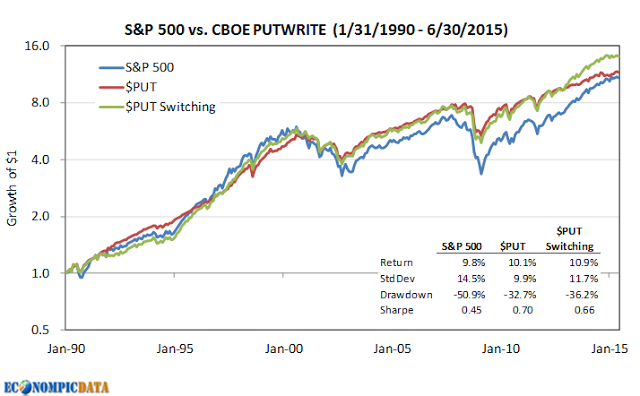With high yield all the rage these days, I thought it might be worthwhile aggregating tweets / posts going back to the beginning of this credit cycle to outline where we've come from and to share some thoughts on where we might be going. Curious if this format is helpful or too disjointed.
Backdrop... how did we get from the distressed 2008 (a 20%+ index yield), to sub-10% yields and a risk on mentality?
In March 2009, corporate bonds appeared to be a screaming buy and the Fed had an outsized impact getting spreads (and yields) much lower - much quicker than I thought was possible.
On the Value of High Yield: Back in June in a post titled Zombie Nation EconomPic relayed: http://bit.ly/a2Chgy
— Jake (@EconomPic) October 26, 2010
Once things calmed, why was there a reach for yield? Because it was the only place where yields were high.Why are Investors are Reaching for Yield?: Because high yield is just about the only place you can get yield... http://t.co/EFGqZMR7
— Jake (@EconomPic) April 18, 2012
Despite the reach, I didn't mind high yield back in 2012 when rates backed up to 8% given where we seemed to be in the credit cycle (i.e. early).
Then and now. High yield bonds actually look attractive relative to June 2007 levels compared to other bond sectors. pic.twitter.com/2O8yZLuN
— Jake (@EconomPic) November 28, 2012
When did things get frothy? I'd say early 2013 when Yields went sub-5%
Yields went from over 8% to under 5% within 6 months. At that point (and since), I could not get my head around high yield valuations.
High yield index now trading 7% above PAR and below 5% yield. Becoming an inexpensive equity hedge at these levels. http://t.co/8R066kDcF9
— Jake (@EconomPic) May 8, 2013
Especially when viewed relative to stocks, once the yield on high yield bonds < earnings yield on stocks.
I don't like equities, but I love them vs high yield. pic.twitter.com/mb3ktOrlFZ
— Jake (@EconomPic) May 8, 2013
I was far from the only person who saw the froth in high yield
TLDR: high yield is extremely frothy "Fisher Says Booming Junk Markets Have ‘Overshot the Mark’" http://t.co/GDDw3ZOVug
— Jake (@EconomPic) September 5, 2014
High yield sentiment seemed formed by the strong 5 year performance of the asset class. But perspective on how that return was achieved appeared missing:
High yield bonds just had best 5 year performance ever. Why? They were yielding more than 20% then. Now? Around 5%. http://t.co/n1b6zZB6wi
— Jake (@EconomPic) March 21, 2014
Interesting back and forth in comments of this tweet. Some very smart people couldn't see a situation I thought / think has a decent probability. High yield underperformance even without stock underperformance given extreme valuations of high yield.
Bond math 101. Best case: High yield will provide 5% annualized nominal returns over the next five years. Worst: -5% pic.twitter.com/NDW2vTQTcq
— Jake (@EconomPic) June 24, 2014
High Yield Sentiment Flashed Warning Signs in 2014 - Very Briefly
The sentiment shift and my view that high yield investors could be well over their ski's became very apparent when high yield "sold off" just 2% in fall 2014 and investors viewed that as abrupt:
Not sure I've seen such negative twitter sentiment for an asset class (high yield) that is up 4.5% YTD and up MTD.
— Jake (@EconomPic) August 8, 2014
Despite that "sell-off", yields in the lowest quality segment were still absurdly rich, but investors calmed their fears and dove back in, despite crazy yields.
Back to 1987:
-Average yield of CCC high yield has been 15.9%
-Annualized return has been 7.4% (8.5% worse)
-Current yield = 7.0%
— Jake (@EconomPic) September 3, 2014
Recent Views: The Sell-off was Expected - It Doesn't Seem to Be the Crisis Others Want to Make It
Which gets us caught up to this year when I brought my blog back after a three year hiatus and I jumped right into an area of the market I felt was misunderstood:
- May 2015: The Case Against High Yield
- June 2015: An Improved High Yield Alternative
- October 2015: The Relationship Between High Yields and High Yield / Stock Performance
Unless the credit issues in energy leak into financials, this is a VERY different situation than 2008. pic.twitter.com/tC5qhWAXdb
— Jake (@EconomPic) December 9, 2015
This is supported by the perspective on where current yields are (yields still aren't all that high) and relatively contained within energy:
@SBarlow_ROB I don't see the stress outside of commodity sensitive areas that would trigger contangion pic.twitter.com/IaZPQybqzO
— Jake (@EconomPic) December 9, 2015
In times like this, perspective is much needed (i.e. things haven't been bad by historical standards):
Perspective... pic.twitter.com/frhm5i2uiu
— Jake (@EconomPic) December 14, 2015
If an allocation to high yield is to be made, note that lower quality high yield has not led to historical outperformance:
Within high yield credit, higher risk doesn't equate to higher long-term returns. pic.twitter.com/H9yTngLuIP
— Jake (@EconomPic) December 14, 2015


















































